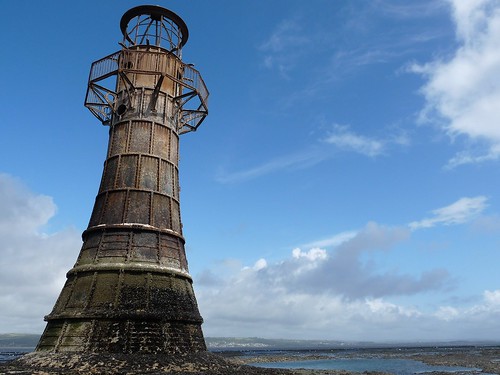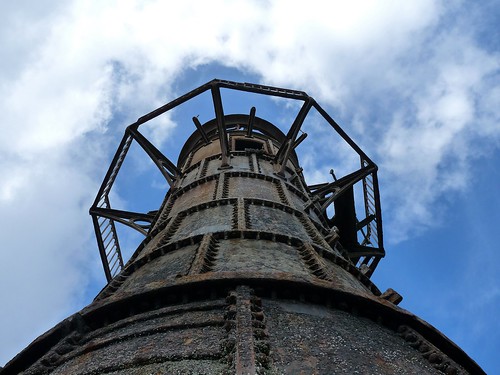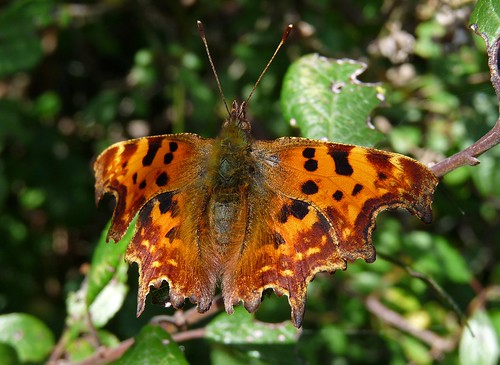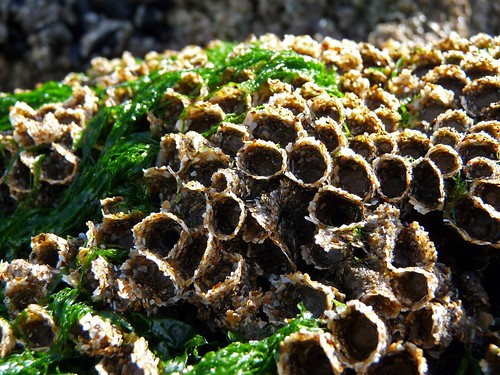Last weekend I was to be found walking along long sandy beaches before crossing huge dune systems, and no I hadn’t left Wales! Saturday was spent at Whiteford Point on Gower, a walk that I absolutely love for its sheer tranquility and peace despite being one of the best beaches on the peninsular. This visit was to be different from usual however as I had a specific goal in mind that I have wanted to reach ever since moving here three years ago. At the end of Whiteford Point stands Whiteford lighthouse, a cast iron structure built in 1865 and the only wave swept tower of its size and structure in the whole of the UK. My goal was simply to touch it. Not a hard task you may be thinking but due to the nature of the tides in the area one that evades many people. Whiteford Point is very flat, meaning that the tide rises and falls rapidly resulting in a narrow window of opportunity to reach the lighthouse. This problem is further compounded by the presence of a deeper channel between the structure and the mainland which just when you think you may be in luck turns out to be full of water and impassable. This time however things were to be different. I knew we were approaching on a falling tide, and a very low one at that, and I knew that the weather was going to remain calm. Despite this I was still nervous as I completed the final approach, hoping that all would go to plan. And fortunately it did.
Up close the lighthouse is even more impressive than I had imagined. The structure has a grace that I was not expecting whilst some of the finer details are remarkable for a structure of this sort. Although much dilapidated it is still possible to see that the original canopy would have been most impressive. Unfortunately the ladder up to the top has long since been removed but I would love to get up there to see the view and to investigate the towers internals. It’s hard to imagine that originally this place would have been home to a keeper for two weeks at a time.
On the walk out to Whiteford Point we saw a couple of Wheatears, 5 Ringed Plovers, 2,000+ Oystercatcher, 3 Dunlin and 20 Knot. A single Sanderling was a nice find feeding amongst the rapidly unveiling muscle beds, as were a couple of Grey Herons. At least 3 Great Crested Grebes were fishing in the water just offshore and we had several small groups of Whimbrel fly past. Also spotted offshore was a group of 12 Eider consisting of mostly juvenile birds. A more unusual sighting was of two Peregrine Falcons on the ground between the lighthouse and the mainland. One of the birds was definitely a male but I couldn’t tell the sex of the other. I presume that one of these was the individual that I saw at Pembrey Harbour a couple of weeks ago given that it is just the other side of the estuary from Whiteford. A final bit of excitement was had on the return journey through the woodland that makes up part of Whiteford Burrows. I spotted a large raptor flying through the trees and my initial impression was of a predominantly grey bird. Immediately my thoughts turned to Goshawk but my more cautious side told me that it was much more likely to be something else. Unfortunately my sensible side won out as a few minutes later we located a pale Buzzard flying around the forest. All was not lost though as we did come across this superb Comma Butterfly in the process.
Sunday was another beach day but this time further around the coast at Kenfig National Nature Reserve. The main lake was very quiet with the only notable sightings being a Chiffchaff, a Wheatear, several Mute Swans and a couple of Great Crested Grebes. It wasn’t until I reached Sker Point that things started to look up.
Out at sea I picked up 4 Sandwich Terns while on the rocks themselves a single Turnstone put in an appearance. The tide was well out meaning that we couldn’t find anything else so our attention turned to the nearby farmland. One field in particular proved fruitful as it held 6 Lapwing and 4 Golden Plover. The Plovers took a good while to identify as they were hunkered down low in the long grass. Just as we had finally decided upon a positive identification a flock of six more flew overhead calling. If they had done that twenty minutes earlier it could have saved a lot of time! It is also worth noting that on the beach I spotted some sizable reefs of Honeycomb Worms. These weren’t on the scale of the ones seen at Ogmore previously but were impressive nonetheless.







0 Comments